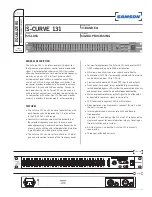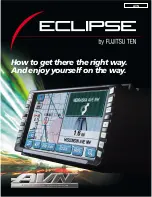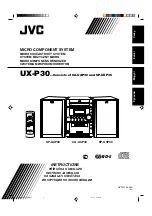
P. 16
AERIALS AND AERIAL FITTING
The normal standard telescopic aerial is designed to be used fully extended. If any
segments are damaged or missing this will result in a deterioration of the radio reception.
It is important to keep the aerial clean which will prevent corrosion and subsequent high
resistance occurring within the segments which will lead to noisy or poor reception.
NOTE:
Special aerial cleaning fluid is available from most garages and car radio
specialists.
The ISO connector is supplied with a wire for use with an electrically powered aerial.
Each time the radio cassette player is turned on +12 Volts appears on this wire. This wire
must only be connected to the +12 Volt input terminal of the relay supplied with an electric
aerial (refer to the instructions supplied with the aerial). When the aerial has been fitted
correctly it will automatically extend when the power control of the radio cassette player
is turned on, and will retract when turned off. This type of aerial is excellent against
vandalism if you are prone to forgetting to retract your manual type aerial.
When fitting an aerial always try to sight the aerial as far away from the engine electric
as possible, this will ensure that any ignition interference is kept to a minimum. Always
make sure that the aerial is secured to a paint/underseal/rust free surface.
RADIO RECEPTION
FM BAND:
FM (Frequency Modulated) transmissions are far superior in sound quality
than AM transmissions (MW, LW).
The signal can be affected by many factors such as car ignition, tall buildings, metal
objects such as cranes or gasometers, hills, trees, wet weather, hot weather etc. In
general, an increasing amount of noise and interference will be picked up by the radio
the further away it is from the transmitter. When driving through built up areas or along
a motorway, the FM reception may be patchy, this is due to the signal being momentarily
blocked or reduced by an object and then reappearing when the object has been passed,
this is heard as a shushing noise and is unfortunately unavoidable.
AM BAND:
AM (amplitude modulated) in addition to the FM band, the receiver is capable
of receiving Medium Wave (MW) and Long Wave (LW) bands. These signals may be
received over very long distances because the transmitting signal will bend around the
curvature of the earth. These transmissions are affected by similar factors to the FM band,
but in addition to this the reception will alter as night falls. The ionised layer in the upper
atmosphere changes at night and allows more distant signals to be reflected back down
to the earth. Subsequently more stations will appear on the waveband and this may cause
tuning difficulties or co-channel interference (where 2 or more stations occupy the same
frequency on the waveband). If the interference is severe, retuning to an alternate frequency
(BBC often use more than 1 frequency) or selecting and tuning into a different waveband
may be necessary.
Goodmans Product Information Helpline (0870) 873 0080




































